- Home
- Tim Winton
The Boy Behind the Curtain Page 6
The Boy Behind the Curtain Read online
Page 6
Some rare marsupials now exist only by chance, in remnant populations on offshore islands. These stragglers are the focus of government breeding programs, but apart from zoos and other enclosures, agencies have few refuges on the mainland safe enough to release bred animals into. The chief sources of safe wild Australian habitat are private. For the past decade, non-government organizations have been acquiring land for conservation purposes. Six million hectares are now held by individuals or associations. None will actually say that they’ve been doing governments’ work for them, but this is more or less the case. Without private participation, habitat conservation in this country would be even more desperate than it is, and the prospects for mammal recovery in particular would be slim indeed.
The chief player in this fight is the Australian Wildlife Conservancy, a not-for-profit foundation that administers more than 3 million hectares of land, making it the biggest non-government conservation landholder on the continent. The AWC runs Mt Gibson Sanctuary, about 350 kilometres north-east of Perth, in the Yalgoo district. I’ve been coming here since it was acquired, as the AWC’s first major purchase, in 2001. A former sheep station of 130 500 hectares, it is transitional country bordering the vast dry saltpan of Lake Moore. The land within its boundaries still supports as many as seven hundred species of native plants in thirteen major vegetation associations, and with every passing year of recovery – since it was destocked and cleared of feral goats, foxes and cats – it gets closer to being a continental refuge for mammal species long extinct in this area and most other parts of the state. My initial visit coincided with the first biological survey of the property, and although I’ve returned many times to camp and hike for my own pleasure as well as to witness its regeneration, it’s been several years since I was here.
In the late afternoon, when the bluish hummock of Mt Singletonshows in the far distance, I pull off onto the dirt drive that runs more than 40 kilometres east to the old station homestead. I bounce past the slagheaps and junk piles of abandoned mine diggings. Already small trees – gimlets and jams – ladder the track with shadows. A mob of Major Mitchell’s cockatoos spills, untidy as a closing-time crowd, from a desert cypress. Every few minutes the track changes colour – yellow, pink, black, purple, vermilion, burgundy, gold – as contours and vegetation types vary.
At the State Barrier Fence, commonly known as the Vermin Proof Fence, I stop the LandCruiser and get out to swing back the gate. A desiccated emu carcass stands ensnared in the wire like an inner-city art installation. In exceptionally dry seasons inland, emus head west in search of water, often moving in huge numbers. The fence, which is more than 1800 kilometres long, was initially built to keep rabbits and dingoes at bay, and periodically you still see news footage of the emu ‘plague’ – hundreds of enormous, thirst-crazed native birds stampeding south or battering themselves to death against the wire, cordoned off as though they were vermin.
The fence stands neatly in the centre of a cleared strip of orange dirt. The earth here looks hard-baked but its crust yields to the faintest pressure of my fingertips. How fragile the soil is in Australia. Before Europeans the continent had never known the impact of hoofed animals. When great herds of sheep and cattle arrived they made fortunes for their owners, yet pastoralism may well have cost the nation more than it will ever earn back. The soil erosion and habitat loss resulting from the introduction of these herds (not to mention the millions of feral goats, pigs, rabbits, donkeys, horses and camels that wander the interior) have been catastrophic for native species. As a kid I spent a lot of time outdoors, on the timbered fringe of Perth and later in the rural south-west, and apart from the luckless western grey kangaroos I slaughtered in the company of farmboys, accountants and church deacons on ‘family picnics’, I almost never saw a marsupial. In the middle of the night, camping on the south coast, I might wake to find a quenda – a southern brown bandicoot – truffling through my foodbox, but of the legendary bilbies, numbats, potoroos and phascogales there was no sign. My biology teachers told me, quite correctly, that these were shy, nocturnal creatures, but the darker truth is that they weren’t obscured by the night, nor were they hiding – they simply weren’t there anymore. This is not a problem restricted to my home range. When it comes to its famous marsupials, much of Australia is silent country.
From the vermin fence I bash the rest of the way east along the rutted track to the homestead, a modest old place with sagging verandahs and outbuildings. There are stockyards nearby, a shearing shed, and the usual array of once-loved vehicles marking the property’s former life as a sheep station. Two new staff dwellings have been built. I note the advent of solar panels, the four-wheel drives with AWC livery, and a mercifully quiet generator in place of the roaring monster you could once hear a mile away at night. For the moment, though, everybody’s elsewhere.
Back in the spring of 2001 the same compound was abuzz with zoologists, palaeoecologists and hardy bird folks, and the old shearers’ cottage was encircled by utes, swags, caravans, and trailers piled with arcane equipment and much beer. I’d just finished a seven-year writing project and was enmeshed in a wearying public campaign for a coral reef in my spare time, so I arrived depleted, under-briefed and sceptical about this philanthropic venture at the edge of the arid zone.
At that time the AWC was a novel entity and an unknown quantity. One of Western Australia’s most senior scientists, Dr Barry Wilson, a man I knew and admired, had suggested I come and take a look while he was up at Mt Gibson with Tim Flannery and other members of its board, but he made the mistake of telling me the whole show was the brainchild of a British-born insurance tycoon who’d developed a late-life passion for Australian native species, so my expectations were not high. I was bracing myself for an encounter with some cashed-up corporate types anxious to redeem themselves with good works – or worse, another pale-green outfit confusing wildlife conservation with the profit motive. Australians are often suspicious of wealthy do-gooders; we don’t exactly have a long, proud tradition of philanthropy. Perhaps it’s a legacy of the convict experience, and the hard-bitten settler mindset that came after it. Compared with the settlement of America, for instance, which was savage enough on any terms, colonial Australia was specially marked by dismay, hunger and disenchantment: place names like Point Torment and Starvation Bay are common. Here there was no promised land for the interlopers, little milk and even less honey. The prospects didn’t get better as settlers headed west, they got even leaner. When wealth was finally generated, its beneficiaries rarely troubled themselves with old-world noblesse oblige or the ethical gestures that the more religious Americans were susceptible to. Having at last wrested something from the waterless frontier, the colonists of the Australian west grasped hard and long at whatever they got. Along with their war on nature they maintained a stalwart resistance to charity because there seemed to be something effeminate about it; there was no room for softness of any sort. The fixed mind has been no easier to prise open than the clenched fist.
Whether we like it or not, conservation traditionally involves the broke hounding the captive in the employ of the low-minded – at least, that’s my experience of advocacy. As for the business of trying to court what we’re reduced to calling ‘the philanthropic dollar’, well, the only metaphors I have are unkind and pornographic. I never held out much hope that the Australian rich might one day enter the fray on the side of nature, especially not our peculiar western breed of mogul. Let’s just say that when I arrived at Mt Gibson that September, in the full-blown siege mode of the campaigner, steeling myself for a festival of bullshit, within an hour of meeting its founder and benefactor, Martin Copley, I was disarmed.
In his home counties accent, with an odd mixture of authority and modesty, the quietly spoken Englishman outlined his plan to secure a network of wild refuges for native mammals. Around us, consulting specialists were already establishing which species were extant on the property and how many had been lost since the introduction of
grazing and predators. We visited trapping surveys, listened to cross-discipline discussions, and spread vegetation maps across the red-stained bonnets of vehicles. There was a rare sense of excitement in the company. None of the scientists I spoke to that week were troubled by the prospect of their data and conclusions being traduced or ignored, which is common in a mining state where environmental assessments are buried, tweaked, or compromised by conflicts of interest. Copley and his crew treated the scientists with grave respect, as if their work really mattered.
Taking me on a hike across the homestead ridge, the founder pointed out raptors’ nests, ancient sandalwoods, and the great pink expanse of Lake Moore. He had a straightforward and unsentimental view of philanthropy. In recent years he’d learnt about native mammal extinction and now had the resources to do something about it – end of story. From the outset he struck me as logical, purposeful and steely. Scrupulously polite, he was impatient with symbolism; his instincts seemed strategic and empirical. Clearly he wasn’t a guilty rich man, nor was he anybody’s fool. He simply saw a vacuum between government agencies and advocacy groups and decided to fill it. He had committed the AWC to restoring country on an ecosystem basis, unhampered by the artificial boundaries of state and agency jurisdictions. While advocacy groups could only prod and finesse and shame government into enlarging its efforts, Copley’s purchase at Mt Gibson dramatically increased Western Australia’s reserve of critically important habitats at the stroke of a pen. Having brought a new respectability to both philanthropy and conservation, the AWC has helped spawn something that may become the environmental mainstream in this country.
Meanwhile, literally back at the ranch, I leave a note tucked into the flyscreen door of the homestead and decide to press further into the sanctuary so I can reach Lake Moore before dark. It’s slow going. I have to ease the troop carrier up the steep, guttered track of the homestead ridge, whose jagged greenstone surface shifts and slides beneath my wheels. Halfway up I see a telltale mound through the spindly acacias and pull up with a flutter of anticipation. Getting out as quietly as I can, I ease down the scree slope to the hummock of sticks, stones and leaf litter that forms the nest of a malleefowl. In a moment I see there’s no bird here, and hasn’t been for some time.
Resembling a big speckled chicken, the malleefowl stands up to 60 centimetres tall. It’s a discreet and elusive bird. The male constructs the nest by kicking dirt and stones into a circular mound with a central crater, in which he dumps vegetable matter upon which the hen will lay her eggs. Heat generated by the rotting detritus incubates the eggs, and hatchlings must fight their way unaided to the surface and then fend for themselves. Some nest mounds are 6 metres across. There are malleefowl out here at Mt Gibson, but I never manage to luck onto them.
Back in the troopy, I crest the ridge and go yawing and crunching down into a whole new landscape. To the east I can see the treetops of a salmon-gum woodland. Far to the north is the ridgeline running lakeward from Mt Singleton. Before I head down into the valley of trees I make a little detour. I’m anxious about the light, but determined to make what has become a ritual visit whenever I’m here.
I stop the vehicle in a clearing that was once unremarkable to my unschooled gaze. When I first came to this spot, with the station’s former leaseholder, Peter Underwood, and the bird expert John Dell, I had no idea what we were looking at or what we might be searching for. Across the hard-packed red dirt there’s a plate of exposed rock where I knelt with the two older men to survey a few burrows that opened around its perimeter.
‘Rabbits?’ I ventured.
Underwood grinned and shook his head. ‘Boodies,’ he said. ‘Boodies!’
‘Boodies,’ I murmured doubtfully, looking to the bird man for some moral support, sensing a joke at my expense. Boodies? Yeah, right.
‘Like a woylie,’ said John Dell. ‘Closely related.’
Ah. Even I’d heard of the woylie. But like most of my countrymen, I couldn’t have described one for love nor money.
The woylie belongs to the great treasury of marsupials that we revere and know nothing about. As I learnt that day, the boodie and the woylie are different species of bettong. A bettong is like a kangaroo but smaller than a teddy bear. Its face is more rounded than a kangaroo’s, with the protuberant eyes of a possum. While the woylie (Bettongia penicillata) nests in the undergrowth of dry sclerophyll forest in remnant populations, the boodie (Bettongia lesueur) is the only macropod to shelter in burrows; it digs elaborate warrens under rock lintels that give its redoubts security and unusual longevity. Like most marsupials it is omnivorous and nocturnal. It has a particular appetite for underground fungi.
‘Look at that warren,’ said Underwood admiringly. ‘You’d think they only just built it.’
By this stage I was properly enthralled by the prospect of a boodie encounter. Wondering if we’d have to wait long, I began to calculate the approach of dusk, but before I could embarrass myself further the others broke the news that, although once widely distributed across the arid inland, the boodie has been extinct on mainland Australia since the early 1960s. The story of this extinction is familiar, involving the catastrophic habitat loss wrought by agriculture and pastoralism. In their native environments, small mammals did not have to contend with predatory ground carnivores like foxes and cats, for which they were easy meat. Under these new conditions the boodie population collapsed quite suddenly.
Still hunkered by the old warren, Underwood confessed to a conviction that somehow, one day, the boodie would return to Mt Gibson. His tone was wistful but also defiant, as if over time he’d inured himself to ridicule on this point. I thought again of the potent space that an absence becomes. The lost boodie is just a part of a wider absence, a pattern of extinction that haunts this continent. Each time I come to Mt Gibson I think of Peter Underwood and his dream of boodies finding their way back to these burrows, like exiles returning to their former homes. With the passage of time that notion has become a little less fanciful. In fact, it might soon be possible, because a partnership of public and private concerns has already seen the boodie begin its long easterly trek homeward.
The last natural strongholds of the boodie are two remote islands, Bernier and Dorre at Shark Bay. A little closer to shore, in the estuarine shallows of this World Heritage Area, squats the smaller Faure Island, another AWC sanctuary. In 2004 I travelled there with Martin Copley, Tim Flannery and the basketball star Luc Longley to help release boodies and other rare marsupials back into the wild. It was a momentous experience. We were there to see something historic.
I remember walking out on Faure into the low mulga just on dark, as stars took over the sky. From a carry cage tagged and supported like a case of impossibly rare jewels came a tiny creature snuggled within a hessian bag. I held it a minute or two while its heartbeat capered against my chest; it wouldn’t have weighed a kilo. I was struck by the fineness of its limbs and I wanted to linger awhile, but there were protocols to observe so I knelt in the red dirt between thorny bushes, lay the bag down gently and peeled it open so that the creature might emerge unassisted, and when it did I got my first glimpse of a boodie. When it stood erect on its hind feet it twitched a moment as if to gauge the weight and fit of its radio-tracking collar, glanced about with huge, dark eyes and bolted, zigzagging out into the gloom of the bush. Watching it go free I found it difficult to maintain a dispassionate decorum. One after the other, boodies and then several rare hare-wallabies shot out into the wild while I pumped my fist silently like a mad barracker on his last warning.
Despite their vulnerability to native owls and raptors, the original seventeen boodies released on Faure Island have grown to a wild population of more than a hundred. Mt Gibson’s old warrens are hundreds of kilometres south-east of Faure, and there are logistical problems to be solved before the first translocations can be undertaken, but at least with the population thriving on the island, where the mainland is in plain view, the boodie is within striking dista
nce of home.
On this 2008 visit I’m struck by how much better the country looks since it was destocked. There’s more vegetation, so much less broken ground, and after a little rain the colours are vivid. Driving slowly down the valley through the shadow matrix of the woodland, I startle a euro, and then a red kangaroo as tall and insouciant as a footballer. Each pauses a moment to sniff the air before launching itself effortlessly out of sight. The euro has a distinctive upright posture, even on the move. Shaggy and auburn, it tucks its elbows in and hitches its shoulders back as if, conscious of its own diminutive stockiness, it’s trying to seem as imposing as its big red cousin. Small macropod syndrome.
Here and there are remnant sandalwoods and clumps of gimlet but the dominant tree of the woodland is the silvery, lithe salmon gum, whose trunk has the luscious sheen of oiled flesh. This tree seems perennially youthful, especially in the presence of York gums, which are heftier and only half barked, as if suffering male pattern baldness. The asymmetrical Yorkie is mildly shambolic, scrofulous and hulking, but its gnarls and wens offer cover and roosts for birds, tiny mammals and reptiles. All about on the red dirt are fallen trees, flat on their faces with their guts spilled open by termites that are gradually reducing them to the very soil they grew in. They’ve become horizontal habitat. During the original AWC survey, palaeoecologist Alexander Baynes identified, in a single hollow salmon gum, 283 jaws of half a dozen native mammal species, mostly dunnarts, many of which were recovered from owl pellets. His work at this and other sites has helped create an invaluable picture of the creatures present at Mt Gibson before the arrival of feral pests. The list he produced is a rollcall of troubled species that includes not just the boodie and the woylie, but the elusive wambenger, the chuditch, the short-beaked echidna, and several species of dunnarts, bandicoots, bats, wallabies and mice.

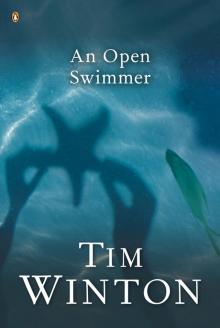 An Open Swimmer
An Open Swimmer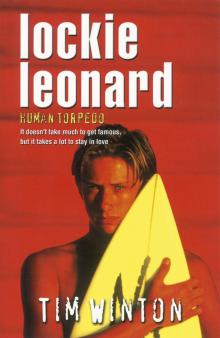 Human Torpedo
Human Torpedo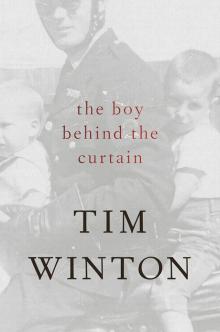 The Boy Behind the Curtain
The Boy Behind the Curtain Scission
Scission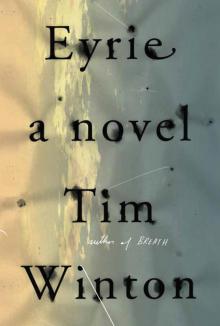 Eyrie
Eyrie Island Home
Island Home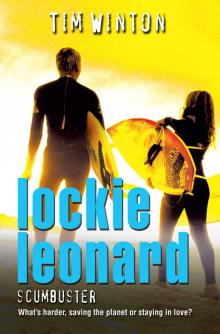 Scumbuster
Scumbuster The Turning
The Turning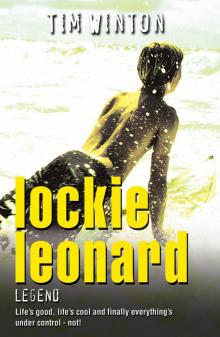 Legend
Legend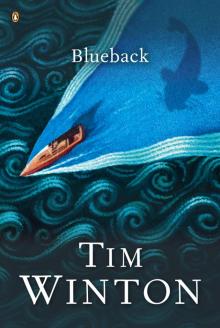 Blueback
Blueback Signs of Life
Signs of Life Breath
Breath Land's Edge
Land's Edge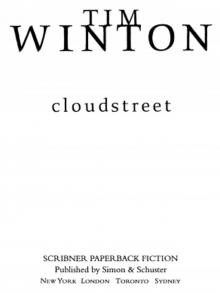 Cloudstreet
Cloudstreet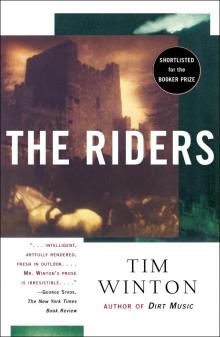 The Riders
The Riders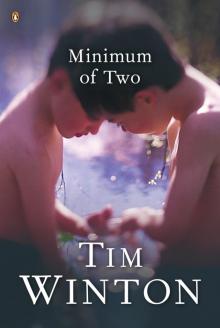 Minimum of Two
Minimum of Two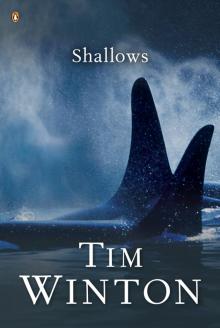 Shallows
Shallows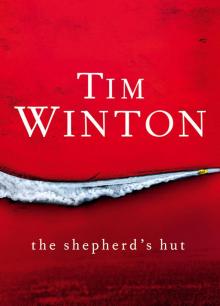 The Shepherd's Hut
The Shepherd's Hut In the Winter Dark
In the Winter Dark